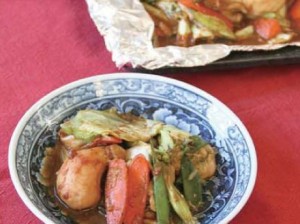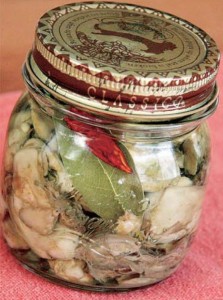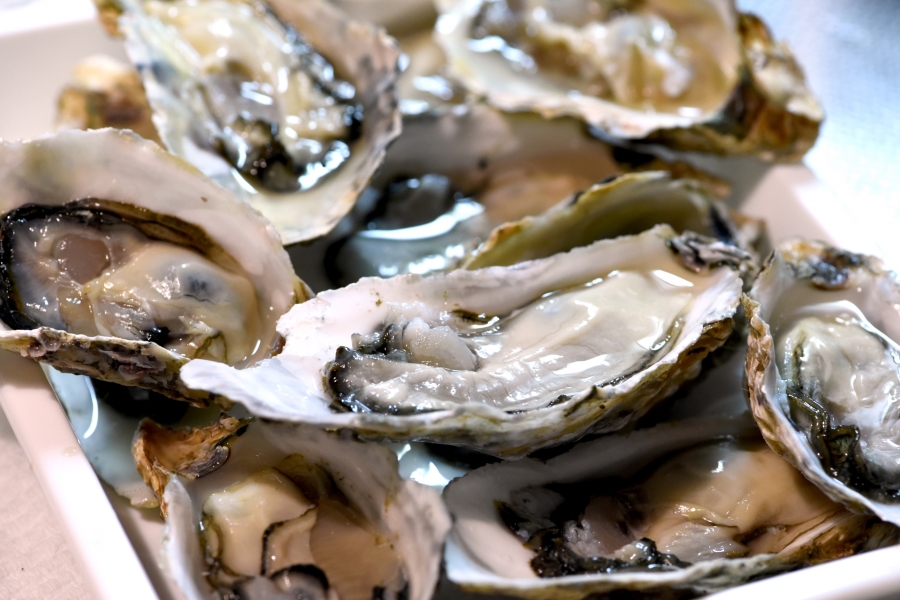Contents:
- What is Kaki (Oysters)?
- Degree of Freshness is Different with Nijiya’s Oysters
- Oyster’s Nutritional Value
- Oyster Recipes
As the weather turns cold, hot-pot dishes appear frequently on the dinner table. Family and friends enjoy gathering around a delicious hot-pot dish. There are many kinds of hot-pot dishes: sukiyaki, shabu-shabu, chanko-nabe, motsu-nabe, etc. The most popular versions of these are seafood hot-pot dishes such as crab-nabe. When salmon, codfish, monkfish, etc. are put in the pot with a variety of vegetables, the umami of the ingredients is definitely enhanced. We recommend putting oysters in seafood hot-pot dishes. A melting, soft and syrupy umami from the oysters fills the mouth. Here, we are going to talk about oysters, which are also called “the Milk of the Sea.”
What is Kaki (Oysters)?
Certain foods cause people to speculate that those who ate them for the first time must have been very hungry; oysters are one of these foods. Oysters are bivalves with rugged, hard shells that stick to rocks. Oysters live in rocky reef regions. Depending on the surrounding environment, density of their habitat, etc., the shape of their shells changes, turning angular or roundish. The harsh-looking shells hardly look like anything you would want to pry open to eat the contents raw. In spite of their seemingly off-putting appearance, oysters have been consumed all over the world for thousands of years. Although Westerners are surprised to see Japanese people eat raw seafood, Westerners themselves have been eating raw oysters since olden days. European historical figures such as Caesar, Napoleon, and Bismarck, for example, must have enjoyed oysters. Oysters have been closely related to human history throughout the world.
Degree of Freshness is Different with Nijiya’s Oysters
At Nijiya, we order bottled raw oysters that are freshly harvested and flown in from Washington State twice a week, on Tuesdays and Wednesdays. The oyster farm we contract with has implemented Japanese technology; there is no smell to the oysters because they are cultivated in a clean water environment.
The freshly shucked oysters are packed in jars.
The taste is rich and creamy with a hint of sweetness. They are of the best quality, thus appropriately named “the Milk of the Sea.”
Oyster’s Nutritional Value
The high nutritional value of oysters also qualifies them as “the Milk of the Sea.” What is most unique about them is that they contain a lot of zinc. Zinc is an essential mineral that plays an important role as a component of enzymes and insulin. Oysters are also abundant in vitamins and minerals including the vitamin B group, calcium, and magnesium. As a rich source of taurine, oysters are an unmixed blessing indeed, enhancing stamina, aiding in recovery from fatigue, suppressing the rise of cholesterol, etc. Oysters detoxify the acetaldehyde produced when alcohol is drunk and relieve alcoholic poisoning in the form of hangover symptoms. The high quality proteins in oysters also protect the liver from alcohol. Let us enjoy eating oysters and maintain our health at the same time.
How to Cook Oysters
Oyster Chanchan-Yaki Recipe

Ingredients (Serves 2)
- 7 oz. oysters
- 1 green onion
- 1-1/2 inch piece of carrot
- 4 leaves cabbage
A)
- 3 Tbsp. red miso
- 1 Tbsp. sake
- 2 Tbsp. mirin
- 1/2 Tbsp. sugar
Cooking Directions
- Wash the oysters with salt water, and dry. Slice the carrot and green onion. Cut the cabbage into chunks.
- Mix the ingredients of A) in a bowl.
- Put cabbage, carrots, and green onions, topped with oysters and the sauce you made in Step 2 on a sheet of aluminum foil. Fold the aluminum foil closed and place on a cookie sheet to bake.
- Bake in a 360°F degree oven about 20 minutes. Stir the mixture after about 10 minutes of baking.
Oil-Marinated Oysters Recipe

Ingredients (Serves 3-4)
- 10-1/2 oz. oysters
- 1 clove garlic
- 1 bay leaf
- 1 red chili pepper
- Vegetable oil, as needed
- Salt, as needed
Cooking Directions
- Sprinkle salt on the oysters, and rub lightly by hand. Rinse well. Set aside on paper towels to dry well.
- Heat a frying pan over high heat. Dry-fry the oysters until the moisture has evaporated.
- Place the oysters (2), crushed garlic, bay leaf, and red chili pepper in a jar you have sterilized in boiling water. Add enough vegetable oil to cover the oysters. Place the lid on the bottle and store in the refrigerator.
* Best after 2 or 3 days. Can be preserved for about 2 weeks if the bottle is kept refrigerated

